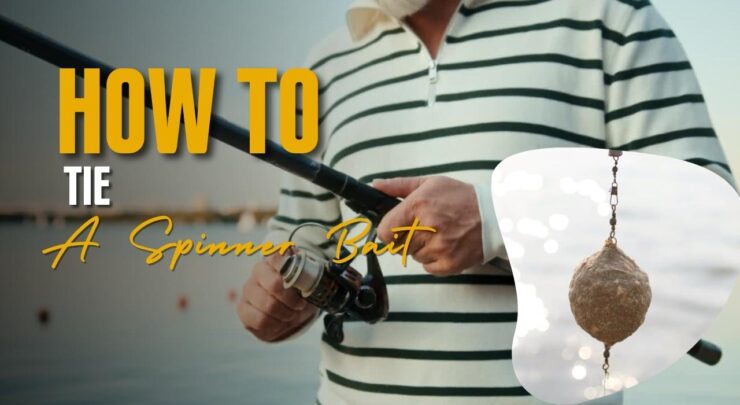Fishing isn’t just about casting your line and waiting for the fish to bite. No, it’s about the intricate dance between angler and fish, a tug of war-between man and nature. The spinner bait is our weapon, and the ability to wield it effectively separates a good angler from a great one.
One of the most effective weapons in our angling arsenal is the spinner bait. Crafted to simulate the appearance and movement of small fish, spinner baits are an irresistible lure for a wide variety of species. But before they can work their magic in the water, you need to know how to tie them onto your line. This post will be your ultimate guide to tying a spinner bait, so let us begin.
Table of Contents
ToggleSpinner Bait in a Nutshell
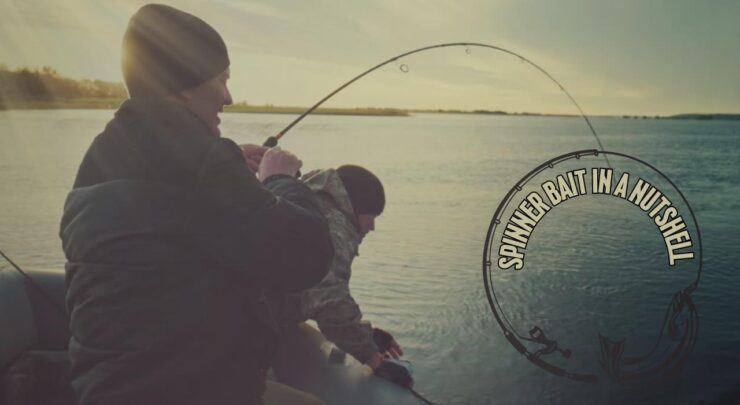
The Allure of the Spinner Bait
The first time I used spinner bait, it was on a clear, sunny day. The lake was shimmering like a sapphire, and the fish were active. I was skeptical about the flashy lure at first, but as soon as it hit the water, a large bass attacked it. That’s the day I fell in love with spinner baits.
These are a type of fishing lure with one or more metal blades that spin like a propeller when the lure is in motion, creating varying degrees of flash and vibration that mimic small fish or other prey. This unique action, combined with the vibrant colors, is what makes the spinner bait so irresistible to many fish species.
Components
Understanding the spinner bait is crucial to learning how to tie it correctly. These lures comprise several parts:
- Blade: This is the part that spins. They come in different shapes, like willow-leaf, Colorado, and Indiana, each creating a unique vibration and flash.
- Body: Usually made of lead, this part can also be adorned with various colors and designs to attract fish.
- Skirt: A collection of flexible strands, the skirt adds movement and covers the hook.
- Hook: Typically, a single hook is used, hidden within the skirt.
Now, let’s learn how to tie one to your line.
Choosing the Right Knot
Importance of the Right Knot
As an angler, one of the most important skills you can master is tying knots. The type of knot you use can have a profound impact on your success. I recall a day when I lost a big catch because my knot slipped at a crucial moment. It was a rookie mistake, but one that I learned a great deal from.
There are several knots you can use to tie a spinner bait. However, the Palomar knot and the Improved Clinch knot are the most popular, primarily due to their strength and simplicity.
The Palomar Knot
The Palomar knot is one of the simplest and strongest knots an angler can use. Here’s how you tie it:
- Double up about 6 inches of your line and pass the loop through the eye of the hook.
- Tie a loose overhand knot with the loop and the doubled line.
- Hold the overhand knot between your thumb and index finger, and pass the loop of the line over the hook.
- Pull on both ends of the line to tighten the knot. Then, trim the excess.
The Improved Clinch Knot
The Improved Clinch knot is another robust and easy-to-tie knot, particularly effective for light lines:
- Pass the line through the eye of the hook and twist it 5-7 times.
- Take the end of the line and pass it through the loop closest to the eye, then back through the big loop you just made.
- Wet the line and slowly pull both ends to tighten the knot. Trim any excess line.
Consider the Conditions
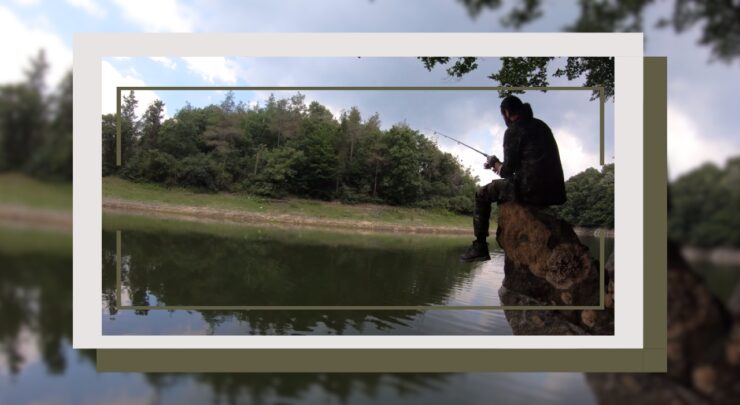
Evaluate Your Fishing Conditions
Like any skilled craftsman, an angler needs to consider the conditions of their work. One summer afternoon, I was fishing in clear water under a bright sky. A flashy spinner bait would have been too much, so I went for a subtle, natural-colored one and made the catch of the day.
The spinner baits you choose to tie on your line should depend on the fishing conditions. Different colors, blade sizes, and designs work better in different scenarios.
Clear or Murky Water
- In clear water, opt for natural, subtle colors and smaller blades. This helps the bait blend in with the surroundings and look more like natural prey.
- In murky or stained water, go for vibrant colors and larger blades. The increased vibration and flash will help fish locate the bait.
Weather Conditions
- On bright, sunny days, use spinner bait with a silver or chrome blade. These colors reflect sunlight, creating a flash that can attract fish from afar.
- On overcast days or in low-light conditions, gold or painted blades can be more effective as they provide a contrasting silhouette for the fish to see.
Rigging Your Spinner Bait
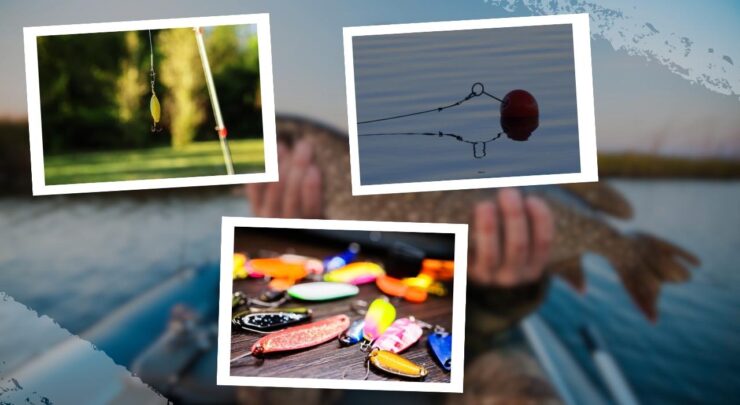
Assembling Your Spinner Bait
Every time I rig a spinner bait, it’s like crafting a piece of art. I carefully select each component, considering the target fish, water conditions, and my personal strategy for the day. It’s a process that calls for patience, precision, and passion.
You don’t always have to use spinner bait as it comes out of the package. You can customize it to your liking by changing the skirt color, adding a plastic trailer, or even adding a trailer hook to increase your chances of a hook set.
Attaching the Skirt
- To attach a skirt to your spinner bait, simply thread it onto the hook, ensuring that the strands fall evenly around the hook.
- Choose a skirt color that matches the overall design of your bait and the fishing conditions.
Adding a Plastic Trailer
- A plastic trailer can add extra action to your spinner bait and make it more enticing to fish.
- To add a trailer, simply thread it onto the hook, just like you did with the skirt.
Attaching a Trailer Hook
- A trailer hook can increase your chances of hooking a fish that strikes short.
- To attach a trailer hook, simply slide it onto the main hook, then secure it with a piece of plastic tubing.
Now that you know how to rig a spinner bait, it’s time to learn how to fish it!
Techniques for Fishing with Spinner Bait
The Art of Casting and Retrieving
Mastering the casting and retrieving technique is critical when fishing with a spinner bait. I remember the first time I nailed the perfect cast. The bait landed just where I wanted, and the retrieve was slow and steady, enticing a big bass from its hiding place.
The main trick with spinner baits is to keep them moving. Unlike some other lures that can be paused or twitched, spinner baits need to be in motion for the blades to spin and attract fish.
The Slow Roll
- The slow roll is a simple retrieve where you cast your spinner bait and retrieve it slowly, just fast enough to keep the blades spinning.
- This technique is effective in cold water or when fish are inactive and need a slow-moving bait to entice them to strike.
The Burn and Kill
- The burn and kill technique involves retrieving the spinner bait quickly (the burn) and then suddenly stopping it (the kill).
- This mimics a scared or injured baitfish, triggering an aggressive response from predatory fish.
The Yo-Yo Retrieve
- The Yo-Yo retrieve involves lifting and dropping the rod tip as you reel in the spinner bait, causing it to rise and fall in the water.
- This action can trigger strikes from fish that are following the bait but not biting.
Tips for Success
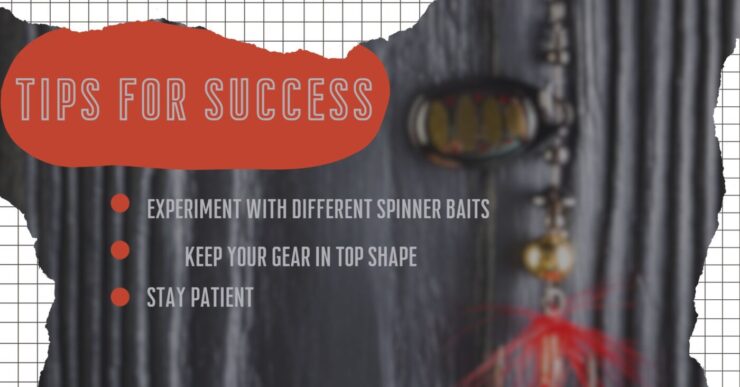
1. Experiment with Different Spinner Baits
Fishing with spinner baits is all about experimentation. There’s a whole world of colors, sizes, and designs to explore. I’ve spent countless hours testing different spinner baits, and it’s this trial-and-error process that has honed my angling skills.
Don’t be afraid to try different spinner baits. You never know which one might work on a given day or in a particular set of conditions. Experiment with different colors, blade sizes, and styles until you find what works best for you.
2. Keep Your Gear in Top Shape
Regular maintenance is crucial for fishing success. I’ve had my fair share of fishing trips ruined by worn-out gear or blunt hooks. Don’t let this happen to you.
Keep your spinner baits clean and sharp. A dull hook won’t set properly, and a spinner bait with damaged blades won’t spin as it should.
3. Stay Patient
Patience is a virtue in fishing. There have been days when I’ve cast my line hundreds of times with no bite, only to land a trophy fish on the very last cast. Patience, perseverance, and a positive attitude can make all the difference.
Keep casting and retrieving, even if you’re not getting bites. Spinner baits are search bait, and they can help you locate fish even when they’re not biting.
Final Words
Fishing, to me, is more than a hobby—it’s a journey. Each cast is an opportunity to learn, grow, and connect with nature. Learning to tie a spinner bait and mastering its use is part of that journey.
Fishing with spinner baits can be an exciting and rewarding experience. The thrill of feeling a fish strike your lure, the anticipation as you reel it in, and the joy of landing a big catch—it’s all part of the angler’s journey. And every journey begins with a single step. Or, in this case, a single cast.
As an angler, your mission is to continually learn and improve. Mastering the art of tying a spinner bait is just one step on your angling journey. So tie your lure, cast your line, and let the adventure begin.
Related Posts:
- Heavy Duty Fishing: 11 Best Rods And Reels For Big Fish 2024
- 12 Best Fishing Lures Ever 2024 - Baits That…
- 15 Best Baitcasting Reel Under $100 2024 - Improve…
- 17 Best Trolling Reels 2024 - Enjoy your Fishing Adventure
- 16 Best Kayak For Beginners 2024 - Kayaking Adventure Gear
- 10 Best Saltwater Fishing Boats - Ultimate Angling Adventure

